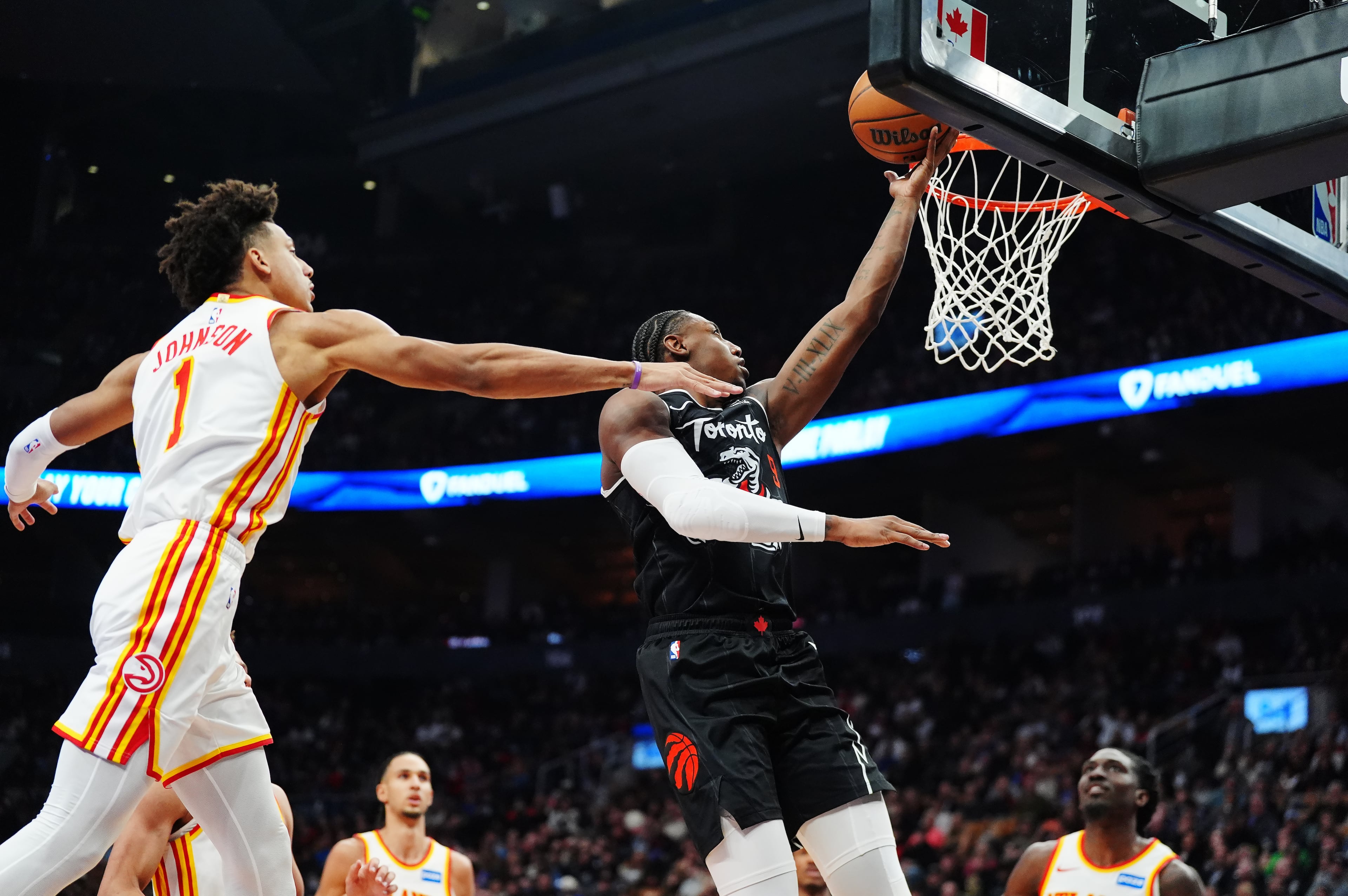WHATEVER HAPPENED TO … RICHIE GUERIN

What he did: The Hawks' head coach when they moved to Atlanta found himself in quite a quandary in the fourth game of the Western Division finals against the Los Angeles Lakers in 1970. Down 3-0 in the series, Richie Guerin had only two healthy guards to play and one was a rookie. So what did the almost 37-year-old six-time NBA All-Star do? He suited up, started the game, and while the Hawks lost 133-114, Guerin scored 31 points, collected five rebounds and had three assists.
It would be the last game Guerin would play, but only a small chapter in a career that landed him in the Basketball Hall of Fame in 2013.
Guerin, one of basketball’s last two-handed set shooters, was born in the Bronx and honed his skills on the hard asphalt playground courts of New York. He was a smart kid, enlisting in the Maine Core Reserves when he was 15 at Mount Saint Michael Academy. He went to a weekly Marines meeting every Thursday while in high school and spent two weeks during the summer training, one time on Parris Island in South Carolina and the other at Camp Lejeune in North Carolina.
He decided to stay close to home for college, getting a scholarship to in-state Iona in New Rochelle and commuted there every day from his home in Bayside, Long Island. Because freshman were not eligible to play varsity in 1951, he set a freshman team scoring record (570 points in 22 games) and would average 20.5 points for Iona during his three seasons on varsity.
Then in the 1954 NBA draft, he was chosen by the New York Knicks in the second round, 17th overall in a league which at that time had 10 teams. Guerin graduated Iona a second lieutenant and spent two years in the Marines at Quantico in Virginia, until his discharge in 1956 when he joined the Knicks.
It took Guerin only a few games to make the starting lineup, and while he played on a team that mostly struggled, he quickly became a star in a league with such icons as Bill Russell, Wilt Chamberlain, Oscar Robertson, Jerry West and many others. Playing in his hometown at Madison Square Garden and very popular because of his aggressive play and hustle, he made the All-Star team his second season, the first of six All-Star appearances.
In his fourth season, he averaged 21.8 points per game, including a 57- point performance against Syracuse, setting a Knicks record. In the 1961-62 season, he averaged 29.5 points and a career-high 7.9 rebounds and 6.4 assists per game. He became the first Knicks player to score 2,000 points in a season and scored a team-high 39 points in the game in which Chamberlain scored 100.
But before the 1963-64 season, the Knicks were looking for youth, and he was traded to St. Louis. There he joined one of the top teams in the league, which included the great Bob Pettit, and midway through his second season there became the player-coach. Guerin would play two more full seasons, but as a coach would lead the Hawks to seven consecutive playoff appearances, which included four in Atlanta.
The Hawks arrived in Atlanta in 1968, playing their games at the small Alexander Memorial Coliseum on the Georgia Tech campus. Guerin’s team finished the first two seasons with identical 48-34 regular-season records and win their first playoff series before losing to the Lakers in the division (now conference) finals.
Guerin was responsible in 1970 for drafting Pete Maravich third overall in the draft, and the next year he took 7-foot-2 center Tom Payne in the supplemental draft. Payne had been the first African-American basketball player at the University of Kentucky, playing under the legendary Adolf Rupp. But his career ended early when in May 1972 he was arrested by Georgia police on a charge of rape. He has been in and out of jail several times since.
Meanwhile, Guerin’s last two Hawks teams when he was coach made the playoffs at 36-46, but each lost in the first round and after the 1971-72 season he moved into the general manager’s role and hired Cotton Fitzsimmons as the head coach.
He remained as GM for two years before becoming a very successful banker at Bear Stearns on Wall Street for 33 years, also doing some NBA games on television.
He finished his playing career averaging 17.3 points, 5.0 rebounds and 5.0 assists in 848 NBA games, scoring 14,676 points and long overdue was inducted into the Basketball Hall of Fame three years ago.
Where he lives: He has been married to Catherine for 61 years and they have four children and 10 grandchildren. He lives most of the year in Palm Beach, Fla., but returns to the West Hampton Beach on Long Island for a couple of months in the summer.
What he does now: Now 83, Guerin said he enjoys life, spending time with his grandchildren and plays golf four times a week. He continues to get mail every day asking for his autograph.
On getting into the Hall of Fame: "Long overdue is a selfish way to look at it. I was very pleased to be alive when it happened because all of my family was there for me to share it with them and it was great to see their happiness.''
On playing against Oscar Robertson: "He was 6-5 and very strong. He was a good passer and shooter and second to him was Jerry West. I had the responsibility of guarding them and they were two of the best and I know what they thought about me because they said it when I was inducted into the Hall. They thought I was a tough competitor, they respected me and they felt the Hall was long overdue.''
On being traded to St. Louis: "It was tough because when it happened my wife was pregnant with her fourth child. I kept asking the general manager if they were going to move me and he kept telling me no. But the season came and I wasn't starting and he still said that he wanted to just look at some different lineups. But then they traded me, and I was really disappointed in the way it was handled. But I did get to go to a team that had a chance to win a championship and play with Bob Pettit, Lenny Wilkens and Zelmo Beaty.''
On turning into a player-coach with the Hawks: "My second year in St. Louis I had a tear in my calf and wasn't playing, and they decided to make a coaching change and asked me to take over the team. I was shocked and I said I am still a player. They thought I could do both, and I said I would give it a try. It worked out, and offensively it was not that tough, but on defense it was because you couldn't see what was happening behind you.''
On Pettit: "First, he was a gentleman and scholar, a very down-to-earth person. He could not jump six to eight inches off the ground but he knew how to rebound and he worked as hard as anyone I have ever seen on a court.''
On coming to Atlanta: "There was some apprehension about it because it was a predominately all-black team moving to the South. And none of us knew anything about Atlanta. But when everyone got the chance to visit the city and look for homes, we all settled in and it worked.''
On playing at Alexander Memorial Coliseum: "They were very gracious, but it wasn't easy. It was a permanent floor, and it was hard and didn't have any give to it. It was different from any arena we played in the league. That is why we practice on a lot of other floors that had some give to it and was not so hard on our legs.''
On his final game as a player: Don Ohl had the flu and Walt Hazzard had a busted hand. I had Butch Beard and one other player at guard, so I said I was dressing and decided to start the game instead of come in off the bench so I would be loose. I had one of those real good games. But they had Wilt and Jerry West and were just better.''
On Maravich: "He had as much skill as any player I had ever seen. He was a little immature. In college he was used to having his own way on the court because he played for his father and was an entertainer. But for anyone coming into the NBA, there is going to be a difference. It took Pete a little bit longer to learn the game and realize what he could do and what he couldn't do. With that said, the media said he caused some problems with team chemistry, but he was probably the most popular player among the black players. He made mistakes with the ball and he worked it out and became very popular with the fans. He was a fantastic player.''


